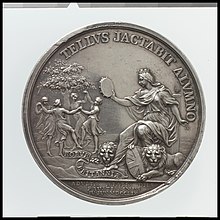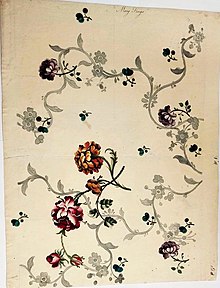Thomas Pingo

Thomas Pingo (1714–1776) was an English medallist and die engraver. He worked for the Royal Mint in London. Originally thought to have come from Italy in 1742, and born there in 1692,[1][2] he was in fact the son of Thomas Pingo Sr (1688 – after 1743) of Plumbtree Court, London. The Pingo family first appeared in London in the 1650s in the Parish of St Martins-in-the-Fields.[3]
His subjects included Charles Edward Stuart (Bonny Prince Charlie, King George III of Great Britain and Prince Frederick, Duke of York and Albany, last Prince-Bishop of Osnabrück (1763 - 1827) ]. His was appointed Assistant Engraver at the Mint in 1771.
Private life[edit]

He married Mary in 1711 and they had 14 children, four of whom were notable. Their daughter Mary Pingo was an artist and designer;[4] baptised in 1741, she died unmarried in 1819.[5] Their sons Lewis Pingo (bap. 1743–1830) and John Pingo (bap 1738- 1827) also became noted medallists,[5] Lewis succeeding his father as the Mint's Assistant Engraver in 1776. Another son, Benjamin Pingo (1749–94), was Rouge Dragon Pursuivant (1780–1786) and York Herald (1786–1794) in the College of Arms.
References[edit]
- Lee, Sidney, ed. (1896). . Dictionary of National Biography. Vol. 45. London: Smith, Elder & Co.
- ^ L. Forrer, Biographical Dictionary of Medallists, Volume IV, London 1909, pp. 555–560.
- ^ L. Forrer, Biographical Dictionary of Medallists, Volume VIII, London 1930, p. 135-136
- ^ Christopher Eimer, The Pingo Family, British Art Medal Trust, London 1998, p.12-17.
- ^ a b "Women artists and Design Drawings in Eighteenth-Century London • V&A Blog". V&A Blog. 2 October 2018. Retrieved 20 January 2023.
- ^ a b Matthew, H. C. G.; Harrison, B., eds. (23 September 2004), "The Oxford Dictionary of National Biography", The Oxford Dictionary of National Biography, Oxford: Oxford University Press, pp. ref:odnb/63939, doi:10.1093/ref:odnb/63939, retrieved 20 January 2023
